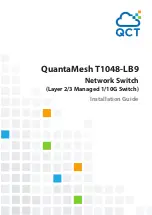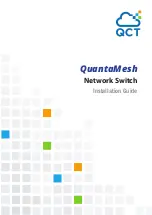
B-2
MAX TNT Hardware Installation Guide
Cabling and Connector Specifications
Ethernet interface specifications
Ethernet interface specifications
The MAX TNT Ethernet interfaces support the physical specifications of
IEEE l802.3 with Ethernet 2 (Ethernet/DIX) framing.
Supported Ethernet types
MAX TNT units can support any of the following Ethernet interface types:
•
10BaseT (unshielded twisted pair): Twisted-pair Ethernet and IEEE 802.3 (10BaseT) with
an RJ-45 connector
•
100BaseT (unshielded twisted pair): Twisted-pair Ethernet and IEEE 802.3u
(100BaseT) with an RJ-45 connector
•
AUI (attachment unit interface): Standard Ethernet and IEEE (10Base5) with a 15-pin
AUI connector
Required equipment
To install an Ethernet interface, you must have the appropriate equipment for the type of
interface to be installed.
10BaseT/100BaseT
For a 10BaseT or 100BaseT connection, you need a twisted-pair Ethernet cable terminated
with RJ-45 modular jacks.
Use an EIA/TIA 568 or IEEE 802.3 10BaseT cable. Some installations require a crossover
cable (for example, when connecting directly to the Ethernet port of a PC).
AUI
For an AUI interface, you need the appropriate transceiver and transceiver cable.
T1/PRI interface specifications
Specifications for a MAX TNT unit’s T1/PRI interface include channel service unit (CSU)
requirements, specifications for the cables and the plugs available for the unit’s WAN
interfaces, the pins to be used on the WAN ports, and the WAN switched services that are
available to the MAX TNT unit.
*9
*RI
*Ring Indicator
*O
*Pin 9 is not active (Ring Indication signal not supplied).
Table B-1. Serial port and cabling pinouts (continued)
DE-9 pin number
RS-232 signal name
Function
I/O
















































